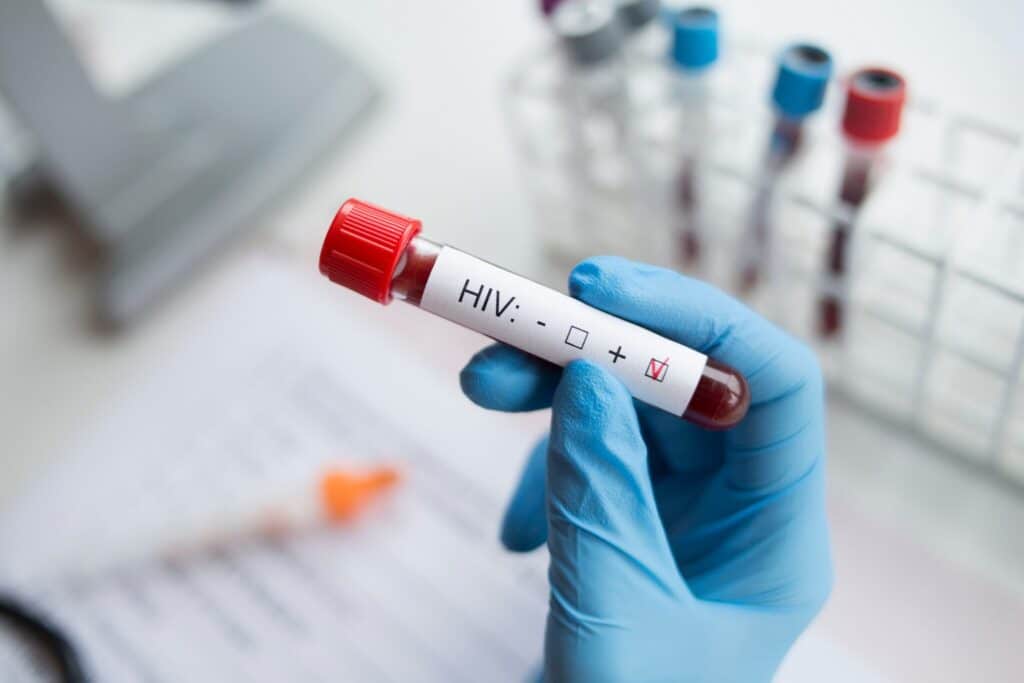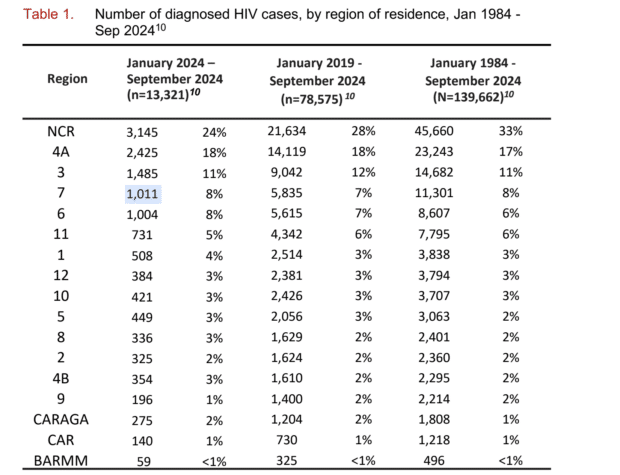Central Visayas HIV cases among highest from Jan-Sept. 2024

Citing the AIDS Epidemic Model’s estimates, the Department of Health revealed that the number of HIV cases in the Philippines could reach 448,000 by 2030 “if prevention and interventions won’t scale up.” | Inquirer.net File Photo
CEBU CITY, Philippines — Central Visayas HIV cases are among the highest in the entire country for the first nine months of 2024, the Department of Health said.
Data from the DOH Epidemiology Bureau released this December showed that Region 7 logged 1,011 HIV cases from January to September 2024. It is also the fourth region that registered the most number of cases in the whole country.
The National Capital Region (NCR) has the highest number of cases with 3,145 followed by Region 4A (Calabarzon) with 2,425, and third is Region 3 (Central Luzon) with 1,485 cases. Meanwhile, the fifth region was Region 6 (Western Visayas) with 1,004 cases, and sixth was Region 11 (Davao) with 731.
The health agency said that these regions have contributed to 77 percent or 60,587 of the total reported cases from January 2019 to June 2024.
And from January 1984 to September 2024, these same regions have consistently logged the most HIV cases with a total of 111,288 cases or 80 percent of all the reported cases.
ALSO READ: IN NUMBERS: HIV cases in the rise in Central Visayas
The other regions in the country logged less than a thousand cases and the region with lowest number of cases was Bangsamoro Autonomous Region in Muslim Mindanao (BARMM) with 59 cases.
In total, the health officials recorded 13,321 HIV cases in the third quarter of 2024.
Since 1984, there are already over 11,301 HIV cases recorded in Central Visayas.
Sexual contact was the leading mode of transmission (MOT) of the newly reported cases from January to September 2024, specifically the male to male sex.
Other MOTs were through sharing of infected needles, mother-to-child transmission, transmission through blood/blood products and needlestick injury.
The epidemiology bureau added that 48 percent of diagnosed males who have sex with males were from the NCR, and 59 percent of those who acquired HIV through mother-to-child transmission were from NCR, Region 4A, and Region 3.
While those who have HIV through sharing of infected needles among people who inject drugs were from Region 7.
Moreover, the health officials reported that 94 percent of those infected with the virus were males and 6 percent were females from 50-year-old below and older.
The report also noted that since 2012, the proportion of males among the newly diagnosed HIV cases has consistently been at least 95 percent, and the age group is getting younger from 35-49 years old in 2002-2005 to 25-34 years old starting 2006.
The DOH has already estimated that the number of people infected with HIV may reach 215,400 before 2024 ends.
Protection
HIV is transmitted through the exchange of body fluids from a person who has HIV such as blood, breast milk, semen, and vaginal and rectal secretions.
The virus can also be passed from an infected mother to her unborn child during pregnancy.
However, the World Health Organization (WHO) said that HIV is not spread through casual everyday interactions like kissing, hugging, shaking hands, or sharing personal items, food, or water.
Although there is currently no cure for HIV, it is a preventable disease. To reduce its spread, the experts and advocates have been encouraging the public to adopt safe health practices.
These include practicing safe sex by using protection like condoms and undergoing testing for sexually transmitted infections (STIs).
Moreover, it can also be managed through antiretroviral therapy or ART. Through this, it can lower the viral load, enhance immune function, and reduce the likelihood of opportunistic infections and cancers often associated with HIV, according to WHO.
According to a local health official, the rise in Central Visayas HIV cases proves that there is still a need to educate citizens on the dangers of the disease.
Disclaimer: The comments uploaded on this site do not necessarily represent or reflect the views of management and owner of Cebudailynews. We reserve the right to exclude comments that we deem to be inconsistent with our editorial standards.


